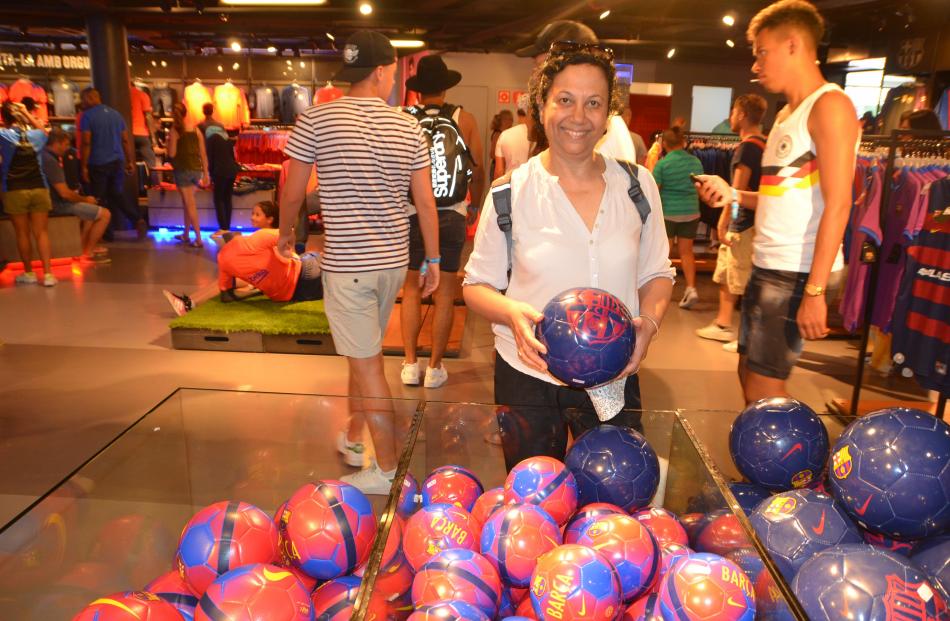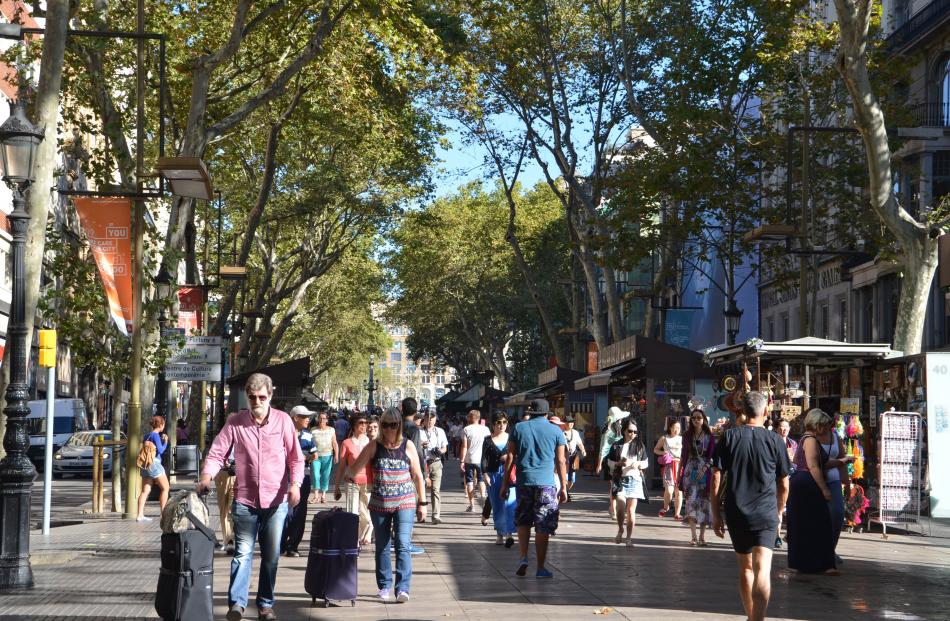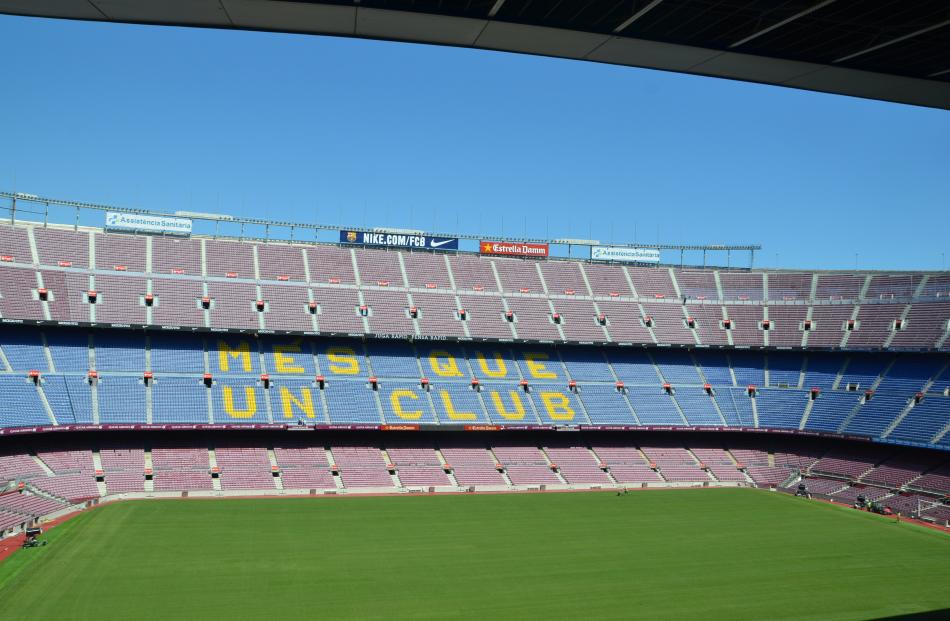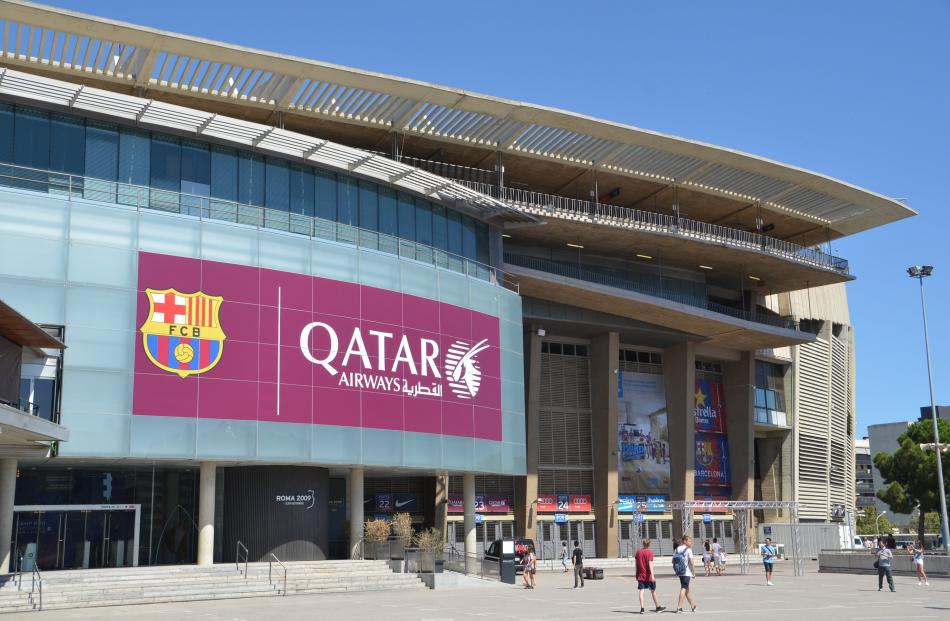Sandip Hor discovers, the hard way, football is the second religion in Barcelona, Spain.
``You are absolutely wrong,'' shouts a group of locals at a tapas bar in Barcelona when I venture that star footballer Ronaldo is a better ball-player than Neymar.
I knew Ronaldo plays for Real Madrid while Neymar spearheads the attack of Barcelona FC, but didn't expect my simple comment to be quite so explosive.
I get over the initial embarrassment to realise I am in a football-frenzy city, where alongside Catholicism futbol is revered as another religion.
``We are over-passionate with football and our club Barcelona FC,'' says one from the group, most apologetically.
Set between the Collserola Hills and the Mediterranean Sea, Barcelona is the capital of Catalonia province, which lies in the northeastern corner of the Iberian Peninsula and occupies about 6% of Spain.
In the late 19th century, the British immigrant workers, miners and sailors introduced football to the port city. The locals adopted the game with such great enthusiasm that they soon needed a club of their own.
So in 1899, Barcelona FC was founded. The club's remarkable success in national and European championships over the years has made the city's residents football fanatics, and their intense obsession with the game is noticeable everywhere in the city and beyond.
Barcelona FC flags hang from the balconies of almost every building. In most bars and cafes, football ranks at the top of any conversation among locals.
Shops around the vibrant La Rambla Blvd, the city's most celebrated precinct, sell claret-and-blue-striped jerseys, flags and scarfs more than anything else.
Hoardings and posters of the players in action are ubiquitous. Current superstar Lionel Messi is treated like a god. I am told that parents these days prefer to present their kids with a ball above anything else, hoping one day they will become another Messi.
Several television channels host programmes around football throughout the day, including live telecasts of key matches in Spain and overseas. The football craze is so all-encompassing that it is hard for visitors not to be drawn into it when exploring the cityscape.
Barcelona has a wealth of visitor attractions, from museums and galleries showcasing the rich traditions of Catalan art to medieval cathedrals and palaces and Art Nouveau buildings designed by legendary Catalan architect Antonio Gaudi.
However, the first port of call for football enthusiasts from around the globe is always Camp Nou stadium, home to Barcelona FC, the team commonly known as Barca.
The club is more than a sporting venue; it stands as an emblem of Catalan nationalism. During the dark period of Spanish autocracy from 1939 to 1975, Barca was a platform for defiance, as archrival Real Madrid was the dictator Franco's club.
To accommodate the club's increasing fan base, Camp Nou was built in 1957. It looks like some sort of revolutionary colosseum, and the 100,000-capacity arena has witnessed many battles on its green turf, some milestones in Barca's glorious football story.
The match-day atmosphere inside must be electrifying, the roars of the crowd heard from kilometres away.
Watching a game there would be a tremendous experience, but if that is not possible then guided tours, called Camp Nou Experience, are available, allowing visitors to peruse many areas of the stadium, including dressing rooms, galleries, stands, players' tunnels and the club's museum.
Opened in 1984, the museum showcases the club's history, including on an impressive interactive wall and in countless displays of memorabilia, from trophies to paintings, photos and sculptures of famous footballers. Witnessing them, it is clear why Camp Nou is revered by locals as a place of pilgrimage. The souvenir shop is like a department store, selling merchandise to keep alive memories of the experience.
The crowds milling through the Camp Nou corridors might suggest it's Barcelona's number one tourist attraction, but actually the La Sagrada Familia, a monumental church under construction since 1883 holds the top position.
In the early 19th century, Barcelona experienced a cultural renaissance that inspired architects of the time to introduce fresh flair in building design.
It was called Modernisme, the Catalan offshoot of Art Nouveau style. The newer part of the city, which extended beyond the old Gothic town, was soon studded with buildings that created a sensation in the architectural world. In this context, the works of Gaudi were most remarkable, La Sagrada Familia his most fabled concept.
Based on the traditions of Gothic and Byzantine cathedrals, his design calls for a total of 18 spires, some still under construction. They are supposed to represent Jesus, the Virgin Mary, the four evangelists and the twelve apostles.
When complete in 2026, this band of spires will provide a unique urban panorama.
The shrine's interior employs the innovative use of light to give the architecture eloquence and grandeur.
But there is no escape from football even here. Just outside the building lies a mini football museum-cum-shop and it is almost routine for visitors to step in there after an exploration of La Sagrada Familia. After all, locals will insist that any site associated with football is no less hallowed to them than a church.
If you go
Getting there: Qatar Airways (www.qatarairways.com) flies from Auckland to Barcelona via Doha
Stay: Hotel Catalonia Barcelona Plaza (en.cataloniabcnplaza.com) is conveniently located and well serviced
More info: Spanish Tourism Board (www.spain.info)



















